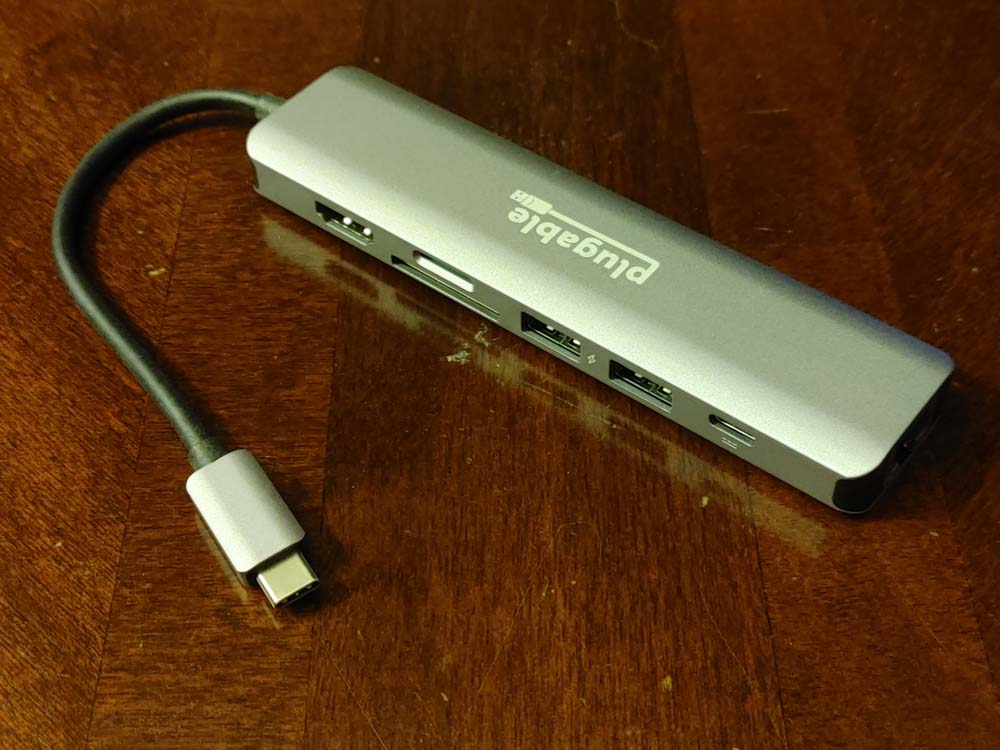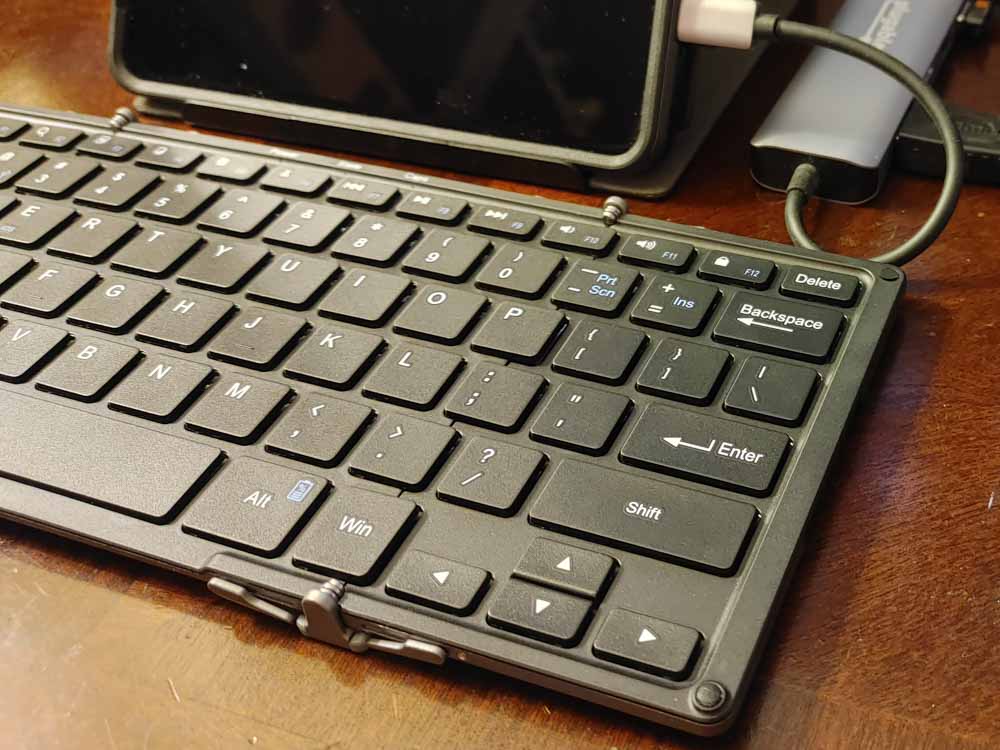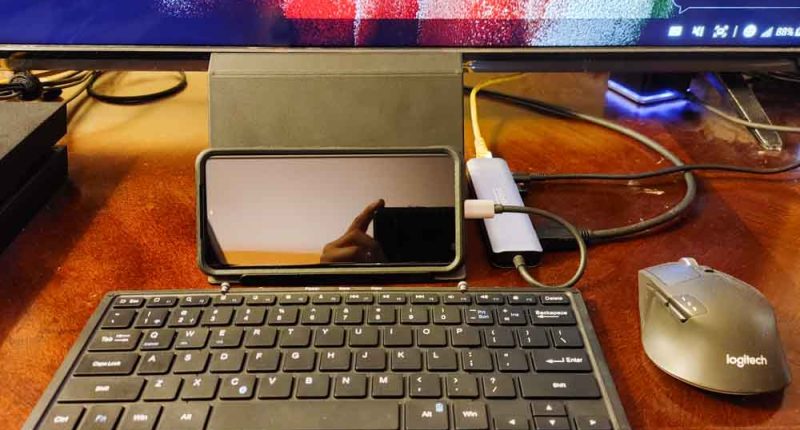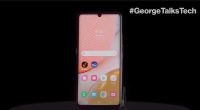One of the coolest features Samsung Android devices have is called Samsung DeX. It’s a software platform that transforms your smartphone or tablet into a desktop computer experience, similar to something like a Chromebook. Many new Samsung devices support it, but you’ll need some extra equipment to enable it. What makes this particularly useful is the multitasking aspect and being able to use a keyboard a mouse just like a real computer. So with that said, what you’ll need is a pretty simple list. You’ll need a hub or HDMI adapter of some sort, an HDMI cable, a power source, a keyboard, a mouse, and a monitor, television, or PC to connect for the display.

In the past, Samsung DeX required the use of a specialized Samsung docking station, but now you can pretty much use almost any supported hub. For this build, I’ll be using the Plugable USBC-7IN1E hub which we looked at a couple of months back. We’re using this because it includes a built-in USB-C cable, has two open USB-A ports, a USB-C pass-through power port, 4K HDMI port, an Ethernet port, and memory card slots. It has pretty much everything you need for a complete desktop solution. The Samsung Galaxy S21 Ultra allows for Ethernet connections when available. The SD card slots are perfect for transferring photos from a camera, and the two USB slots will come in hand for any thumb drives or accessory dongles you may need to use. It’s also thin and light which is a big plus.

Next up, and this is the important part, is the power source. If you’re using a Samsung smartphone like the Galaxy S21 Ultra, it’ll need to be hooked up to an external power source for it to switch over to DeX. Otherwise what shows up is just a mirrored image of your home screen. For my power source, I’m using two separate methods. First up is a regular 25W charging plug with a USB-C cable plugged directly into the USB-C pass-through port on the hub. This is for when I need longer DeX sessions. For shorter ones and ones where finding an outlet is problematic, I’m using a portable power pack like the BioLite Charge 40. This makes the setup a bit more portable.
Once you have power, the last items you really need are a good keyboard and mouse. I suggest using Bluetooth or wireless units, just to keep the cables to a minimum, and maybe a smaller-sized, portable keyboard to cut back on bulk. Again, I have two setups for this. The first is a home setup which consists of the Logitech MK850 keyboard and mouse combo. This isn’t being sold any longer, but Logitech does have another keyboard and mouse combos you can buy. I’m using it with the Logitech Unifying receiver which I have plugged into the hub. At home is where I don’t really care about size and can deal with a full-sized keyboard.

On the go, however, I’m going with Plugable’s Full-Size Bluetooth Keyboard. This is a compact folding keyboard that includes a stand for your device. The keyboard has 78-keys that are full-size keys. It just lacks the usual number pad on the side. This helps keep the size and weight down when you place it in your bag.
Lastly, you need to find a TV or monitor to use your DeX setup with. Without a display, these items are virtually useless. You could carry around a small portable display, but I’m not doing that. I mainly only need my laptop when I’m in my hotel room or away at an Airbnb. If that’s the case, I can always just connect to a television so all I need is a nice, lengthy HDMI cable.

Of course, there is another way to enable Samsung DeX that doesn’t require some of this equipment and it’s via a wireless connection to your computer or TV/Monitor if it supports a wireless connection. On the PC or Mac, you’ll need to download the DeX app at www.samsungdex.com. I don’t find this method all that useful because why use DeX if you already have a PC or Mac in front of you? If you wanted to use some Android apps on your PC, you could always just download the Your Phone app, which seems like a better solution if you have a Samsung phone.
So there you have it. This is basically how I would run a Samsung DeX setup for any Samsung phone that supports this feature. Basically, if you’re trying to go small, find the smallest hub that has all the ports you need, a small compact keyboard and mouse, cables, a power source, and a display to output Samsung DeX to. Once you have all that, you’re golden.



